| 1 | Banded water cobra |
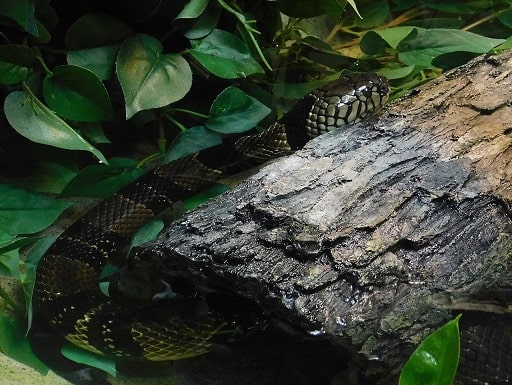
A 1.8 metre species (max 2.8m) found in the rivers and lakes of central and western Africa. The banded water cobra (Naja annulata) has extremely smooth scales, and one of the smallest neck hoods, allowing it to glide through forest streams with less water resistance.
Naja annulata has many adaptions to aquatic life, and its venom is another. Most cobras have an abundance of cytotoxins, which cause cell death and necrosis surrounding the bite, but banded water cobras have some of the least. Instead, all their venom production systems are funnelled towards manufacturing neurotoxins, which is the same as most coral reef snakes. In watery environments, paralysing prey quickly is of the utmost importance.
Banded water cobras have some of highest neurotoxin levels of any cobra. This species is particularly abundant in post-synaptic alpha neurotoxins, which block acetylcholine receptors in muscle cells from receiving brain signals. There’s no specific antivenom for this species but happily, bites are extremely rare. This snake is fairly unaggressive – they stand their ground and hiss, but rarely advance forwards. By rarely straying 5 metres from water, they always have a handy escape close by. The venom of this snake has a white colour.
| 2 | Tiger rattlesnake |
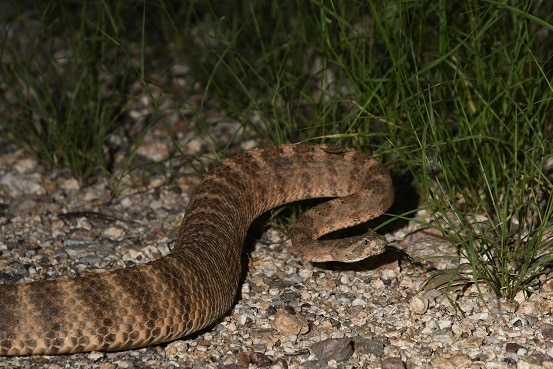
Out of the 35-40 rattlesnakes inhabiting the Americas, very few are predominantly neurotoxic. The likes of timber rattlesnakes possess haemotoxins, which attack red blood cells, and cytotoxins, which directly destroy skin cells and cause mass necrosis.
The tiger rattlesnake is one of the type 2 rattlesnakes: a rarity to possess the strong neurotoxin called Mojave toxin. This is also found in South American and Mojave rattlesnakes. In mice, tiger rattlesnake venom causes poor coordination, followed by a few minutes of hyperexcitablility, and then death via respiratory paralysis, which sometimes comes within 15 minutes. Tiger rattlesnakes also have the simplest rattlesnake venom, with only 15 active genes, as Mojave toxin is overwhelming enough to carry the slack.
Mojave toxin isn’t just a neurotoxin. It triples its danger by triggering lung haemorrhages and being myonecrotic, directly destroying muscle cells. This is the single deadliest rattlesnake venom against mice. Because of their remoteness, tiger rattlesnakes have never caused a human death on record, but apart from dehydration, there’s another danger to be aware of in the Arizona deserts.
| 3 | Fea’s viper |
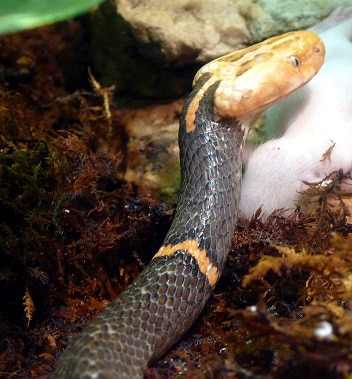
One of the most obscure vipers on the evolutionary tree. While the Crotalinae viper subfamily contains 155 members (including all rattlesnakes), Fea’s viper belongs to the Azemiopinae subfamily with only 2. It inhabits the mountains of Tibet, Vietnam, Laos and southern China, and has an unusual white head contrasting against a near purple body.
Weirdly for vipers, Fea’s viper produces very few haemorrhagic, cell-destroying or blood clotting toxins. Instead, it relies purely on neurotoxins. Being an isolated snake, its specific weapons are equally unusual, as Fea’s viper venom contains the rare neurotoxin azemiopsin. All muscle cells have receptors for acetylcholine, a nervous system agent which transports signals from the brain. Like black mamba toxins, azemiopsin blocks these receptors, preventing them from functioning normally.
Precisely how azemiopsin differs from other neurotoxins is a mystery. Either way, mice injected with Fae’s viper venom suffered from respiratory paralysis, twitching muscles, and ultimately death within 60 minutes. In humans, the venom is milder, but a 43 year old snake breeder who was bitten suffered from blurred vision, so small children may be in grave danger.
| 4 | Wagler’s pitviper |
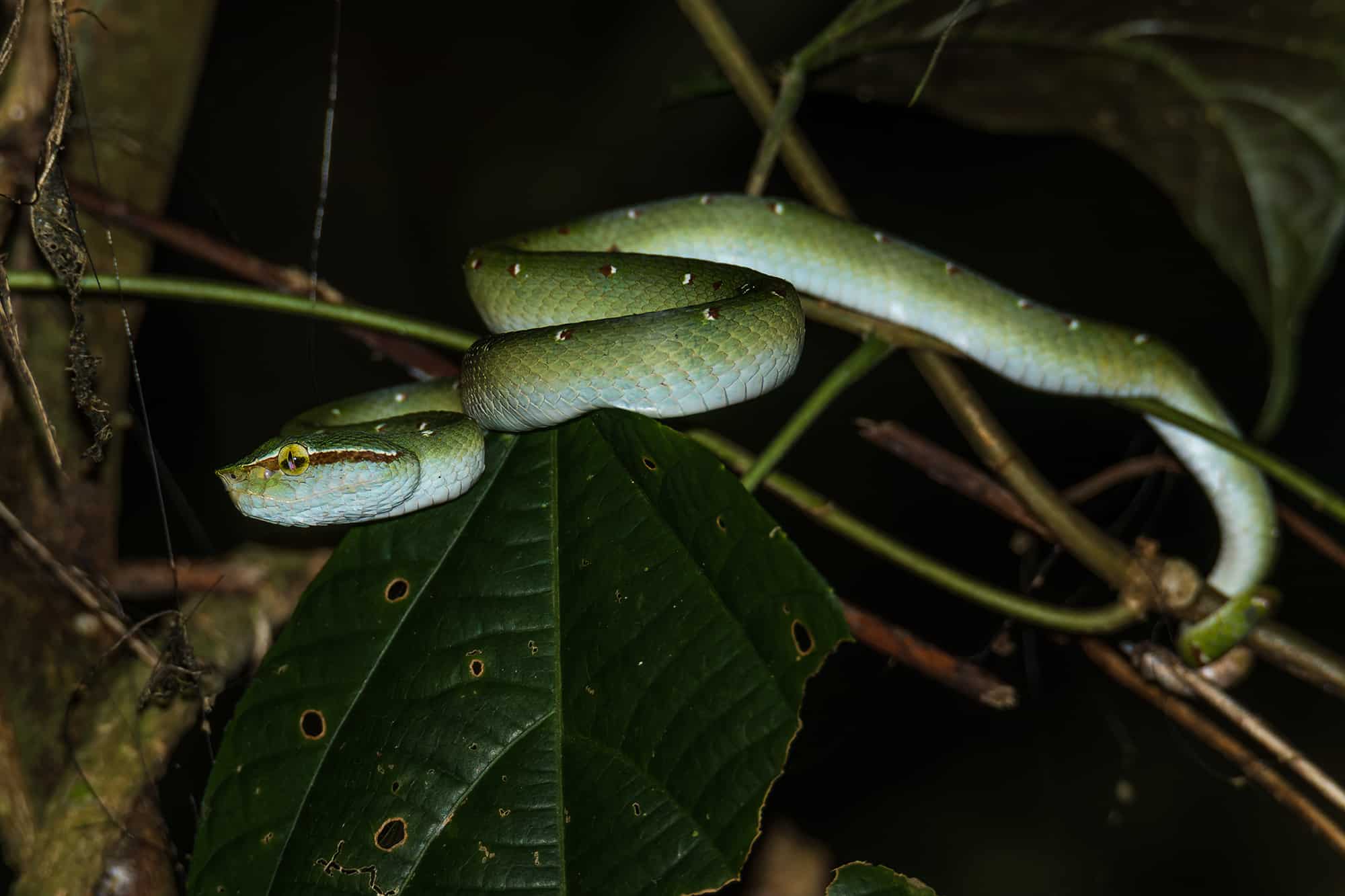
A snake with several colour morphs which lives in southern Thailand and peninsular Malaysia. Wagler’s pitvipers live in forests, resting on bushes and low trees, and caused 120 (recorded) bites in Malaysia from 2015-2021. Unlike its Thai neighbours such as the white-lipped pitviper, Wagler’s pitviper has barely any haemorrhaging powers. The strongest local effects are moderate swelling and throbbing pain. Instead, it’s a neurotoxic snake which contains another unique chemical class: the waglerins.
These act similarly to the Fea’s viper, blocking acetylcholine receptors in muscle cells which receive brain signals. In fact, until azemiopsin was discovered in the Fea’s viper, these were the only toxins to block muscle neuroreceptors in the entire viper family. It’s a common method of muscle paralysis in black mambas, cape cobras, etc, but very rare in vipers.
Waglerin-1 is the best researched neurotoxin in the the Wagler’s pitviper. Southeast Asia hosts dozens of closely related pitvipers belonging to the Trimeresurus and Tropidolaemus families, and Wagler’s pitviper is the most strongly neurotoxic of them all. The waglerin neurotoxins bind to receptors in mice particularly strongly compared to rats and humans. They also bind more strongly to adult receptors than youngling.
| 5 | Many-banded krait |
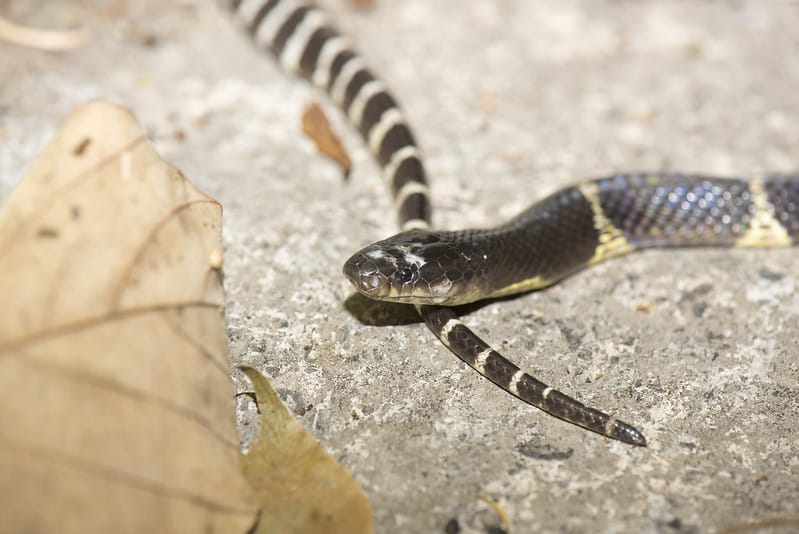
This 100-150cm killer lives in Taiwan, Hong Kong, and southern China. Despite causing 8% of snakebites in China, the many-banded krait causes 26.9–33.3% of all fatalities, depending on location. The reason is its avalanche of neurotoxins, the main one being alpha-bungarotoxin (α-BTX), a post-synaptic three finger toxin. There’s also κ-bungarotoxins, which only comprise 0.1% of the venom.
A study from Taiwan, one of the species’ hotspots, found that 27.3% of victims suffered from respiratory failure. Simultaneously, very few local symptoms such as necrosis or even swelling develop. Victims often require artificial ventilation, and the venom is resistant to antivenom. If a vial isn’t administered within four hours, then respiratory paralysis is extremely likely.
Many-banded kraits also cause dilated pupils, and this appears in close correlation with respiratory failure, showing that the same neurotoxins are responsible. Milder neurotoxic symptoms include trouble swallowing, double vision, and leg weakness. Elsewhere, many-banded kraits have the unusual symptom of throbbing, body-wide muscle aches, which victims describe as being like the feeling after a punishing exercise session.
| 6 | Caspian cobra |
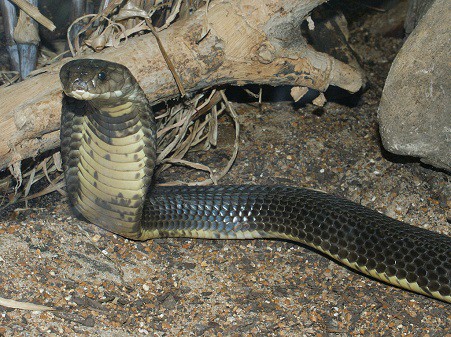
The Caspian cobra is probably the most toxic cobra in the world, outstripping even the crafty spitting cobras. They live all over central Asia, overlapping in northern India with their Indian cobra relative. This neurotoxic snake measures 1-1.4 meters, and particularly likes rocky, semi-arid habitats.
Caspian cobras (Naja oxiana) can kill their victims in 45 minutes, and the bites are particularly painful. Like many neurotoxic snakes, respiratory failure is the main cause of death, as the lungs cease to receive inflation instructions from the brain. The initial symptoms include poor coordination, throat and limb paralysis, weakness and drowsiness. Those from northeastern Afghanistan, Iran, Uzbekistan, and Turkmenistan have a particularly deadly venom.
This abundance of neurotoxins makes Caspian cobra bites harder to treat with antivenom. Caspian cobras also specialise in heart attacks, and have a toxin called ribonuclease V1, which has the ability to destabilise RNA.
Specific neurotoxins in the venom include alpha-cobratoxin, cobrotoxin B and neurotoxin II. More positively, this venom is now under investigation for cancer treatment. Caspian venom destroys all in its path, and the hope is to redirect it to cells we want to destroy.
| 7 | Central Asian pitviper |
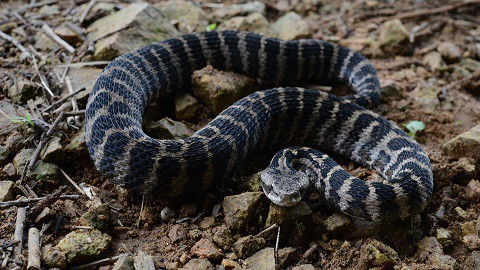
Gloydius intermedius belongs to the same family as the mamushi of Japan, but lives further west, inhabiting the mountains of northwest China. It also has vastly more neurotoxins, unlike the mamushis’ mostly haemolytic venom.
A bite from this species will produce less blood gushing uncontrollably from the fang marks, but muscle weakness, drooping eyelids, trouble breathing and blurred vision. It has a specific neurotoxin called gindexin A, a presynaptic neurotoxin which disables signals as the brain issues them. Because of their mountainous habitats, always above 500 metres in altitude, bites are thankfully rare. They particularly enjoy forests intermingled with rocky slopes. Their spots usually have savage weather, causing them to hibernate for much of the year.
The 24-strong Gloydius family is like an Asian parallel of the rattlesnakes, as most have a haemolytic and cytotoxic venom that destroys skin cells en masse, but a handful such as Gloydius intermedius wield neurotoxins. In fact, this study stated that the central Asian pitviper might be the direct ancestor of neurotoxic rattlesnakes in America (type 2), such as tiger rattlesnakes and Mojave rattlesnakes.
| 8 | Death adder |
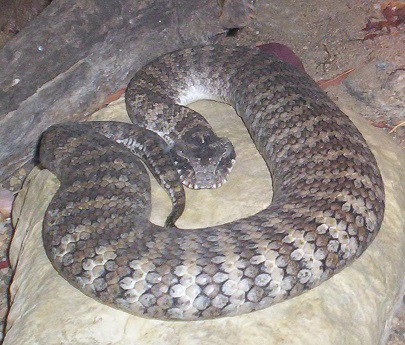
The death adder is one of the most common venomous Australian snakes, and all hospitals stock the tailor-made antivenom. Just one vial is enough to deactivate most circulating toxins. But if you don’t make it in time? This lazy, bulky snake is highly neurotoxic. Serious brain-meddling symptoms include breathing difficulties and partial paralysis, and milder ones include drooping eyelids, seeing double, and limb weakness. One death adder victim required artificial ventilation for 83 hours, and another’s voice was so slurred that his friends couldn’t understand him.
In fact, the antivenom might not save you after all. The neurotoxins are the least affected by the remedy, possibly because they bind to nervous system receptors so rapidly. Death adders wait by trails, barely moving for days or weeks, so the best solution is to keep on walking and not poke one with a stick. A study found that 59% of bites happened when people intentionally bothered the snake, and 24% after accidentally stepping on one. 14% were absentmindedly shifting objects near the death adder’s camouflage spot. Death adders are mainly slow, unlike the nimble eastern brown, but their strike is rapid.
| 9 | Eastern coral snake |
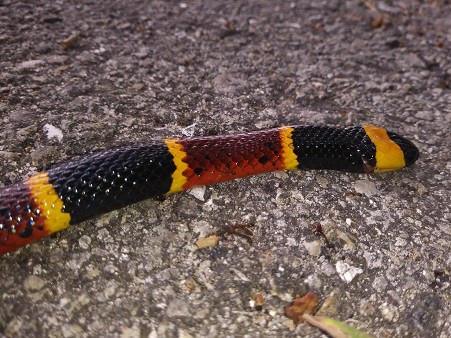
The neurotoxic snake in your local forest, your backgarden, your kitchen – maybe under your bed sheets. Eastern coral snakes are shy and will never rear up aggressively like a spitting cobra. This species has only killed one person since antivenom was invented in the 1960s, a Hispanic man in 2006 who was lying in a tent drinking beer. Don’t underestimate them though, as the venom is loaded with neurotoxins.
Unlike the speedy many-banded krait, where respiratory failure can arrive within 1.5 hours, the eastern coral snake has a tricky delay factor. The neurological symptoms such as dizziness, double vision, speech impediments and drooling can take 12 hours to arrive. This leads bite victims to think they’ve got away with it. The eastern coral snake is neurotoxic across its entire southern US range – a study found that its toxins barely vary by region.
The first neurotoxic symptom to kick in is ptosis, or drooping eyelids. The bite wound rarely swells, but is intensely painful, with hot tingling spreading. We may know the origin story, as eastern coral snakes feed on other snakes, which necessitated a venom that would paralyse them quickly.
| 10 | Black mamba |

The notorious black mamba has placed all its cards in the neurotoxic camp. After being bitten by this fast, thin snake, the bite wound has virtually no sensation except for tingling. Even hours later, the bite produces almost no swelling or necrosis spreading up the affected limb.
Instead, the black mamba produces a neverending list of symptoms connected to disrupted brain signals: drooping eyelids (ptosis), poor coordination, drooling, blurred vision, and unconsciousness. They also cause shrinking pupils, AKA miosis, in contrast to the dilated pupils of the many-banded krait. The main cause of death is respiratory failure, although black mambas don’t kill quite as many Africans as people believe.
Black mambas contain neurotoxins in the alpha-neurotoxin class. Like Fea’s viper, these are post-synaptic neurotoxins which block muscle acetylcholine receptors from receiving signals, but are significantly stronger. These combine with a toxin called calciseptine that inhibits smooth muscle contraction, furthering the paralysis. Without antivenom, black mamba bites have a poorer than 50% survival rate. The antivenom itself is effective, but the big problem in Africa is poor infrastructure which makes reaching victims in remote villages difficult.